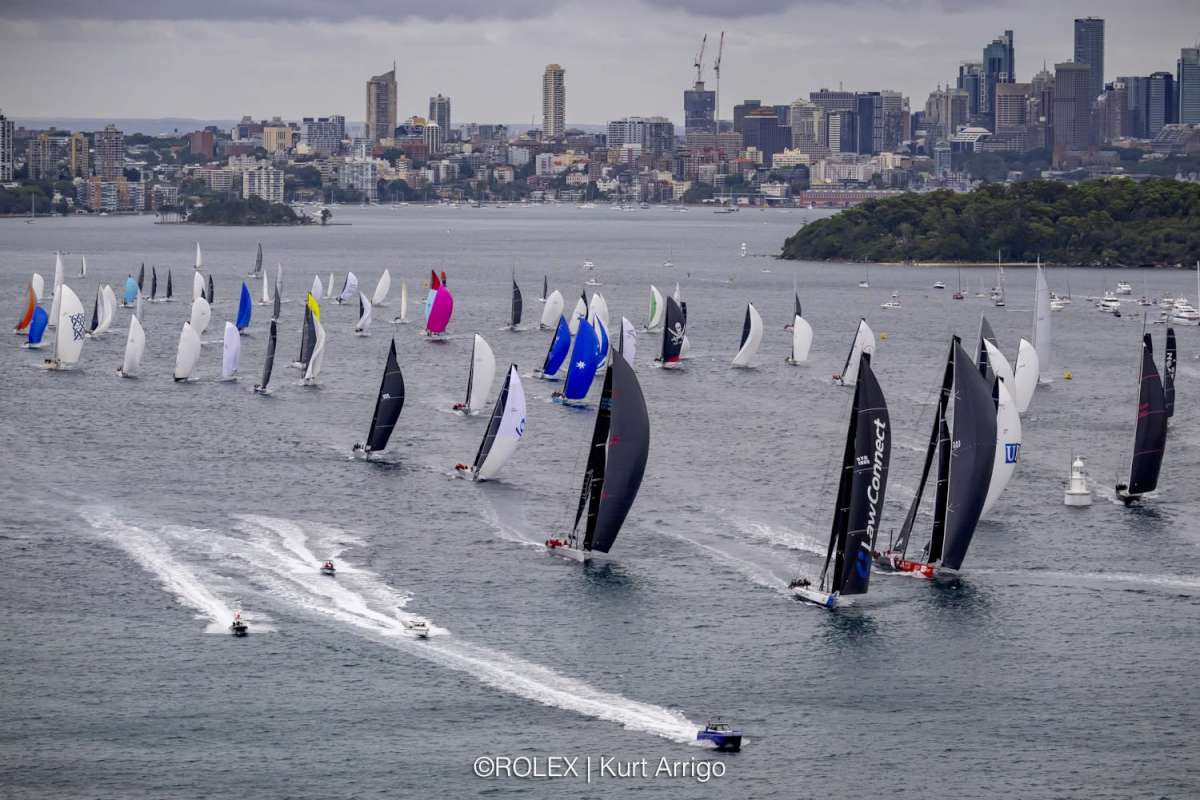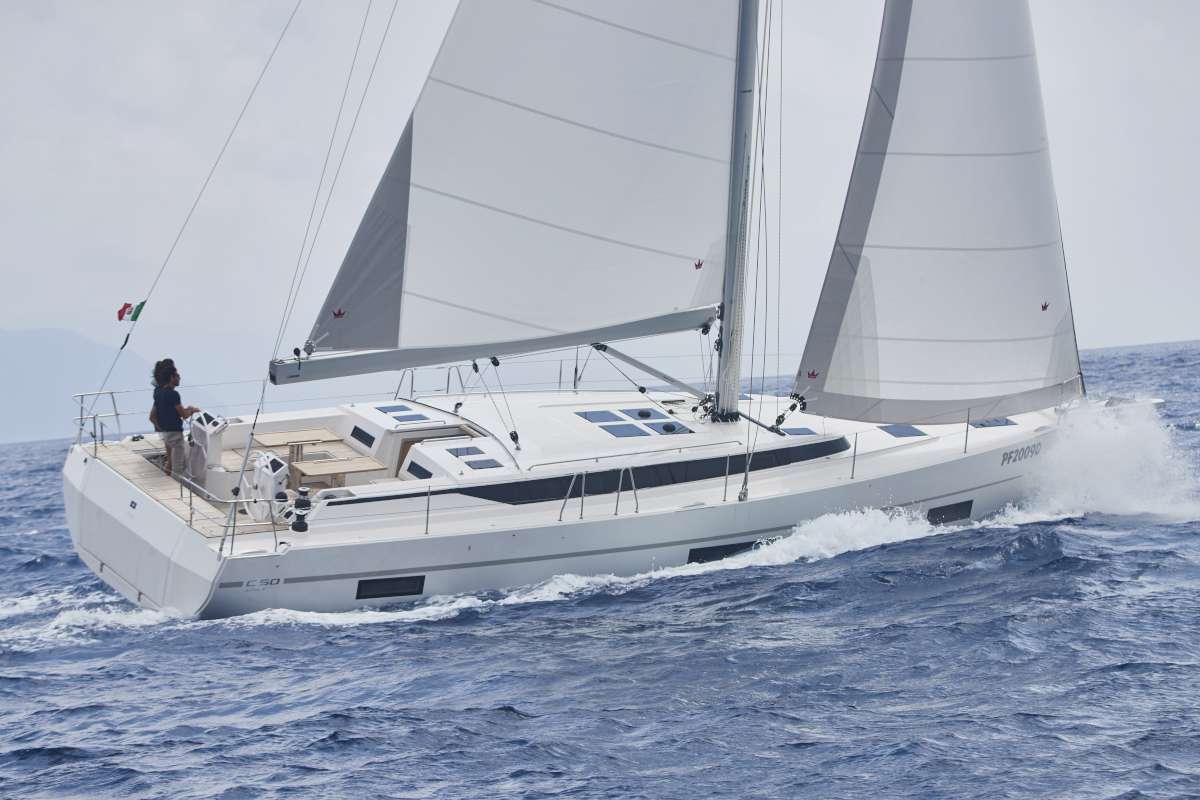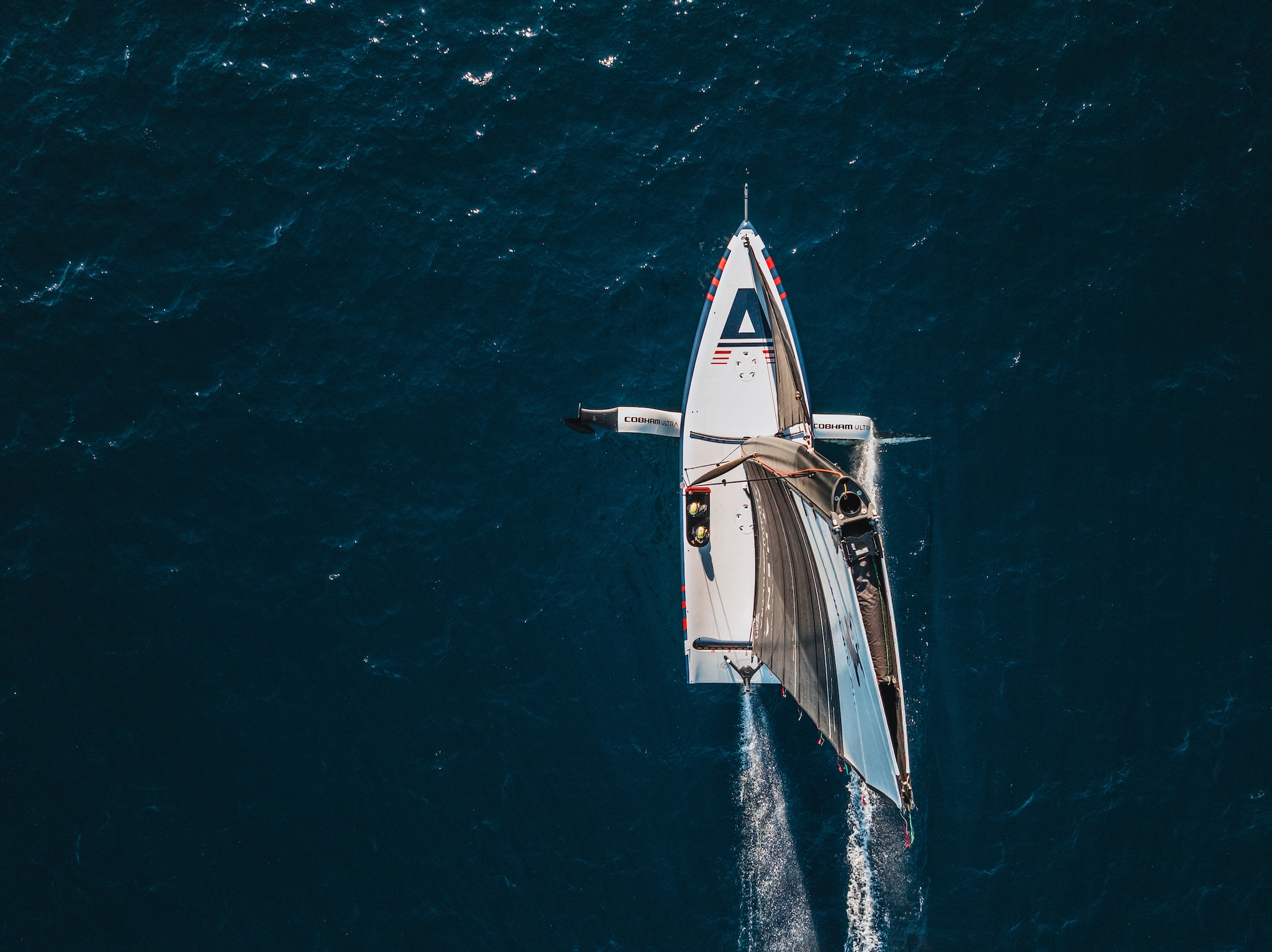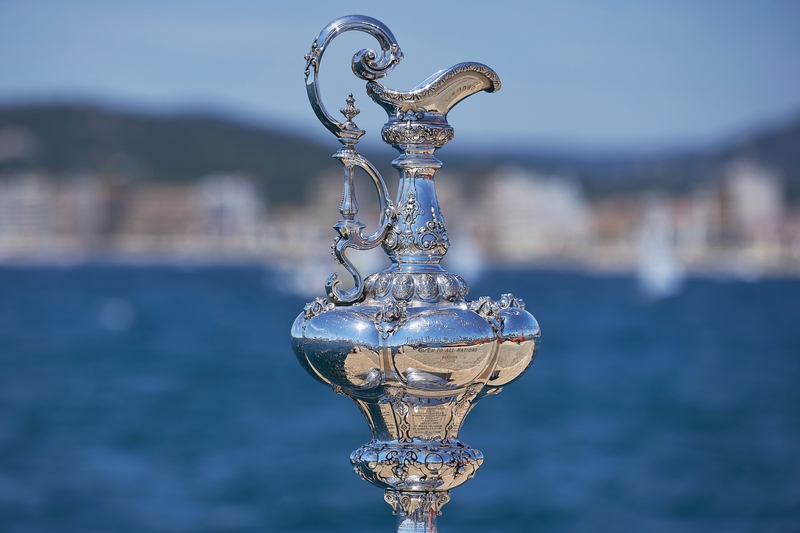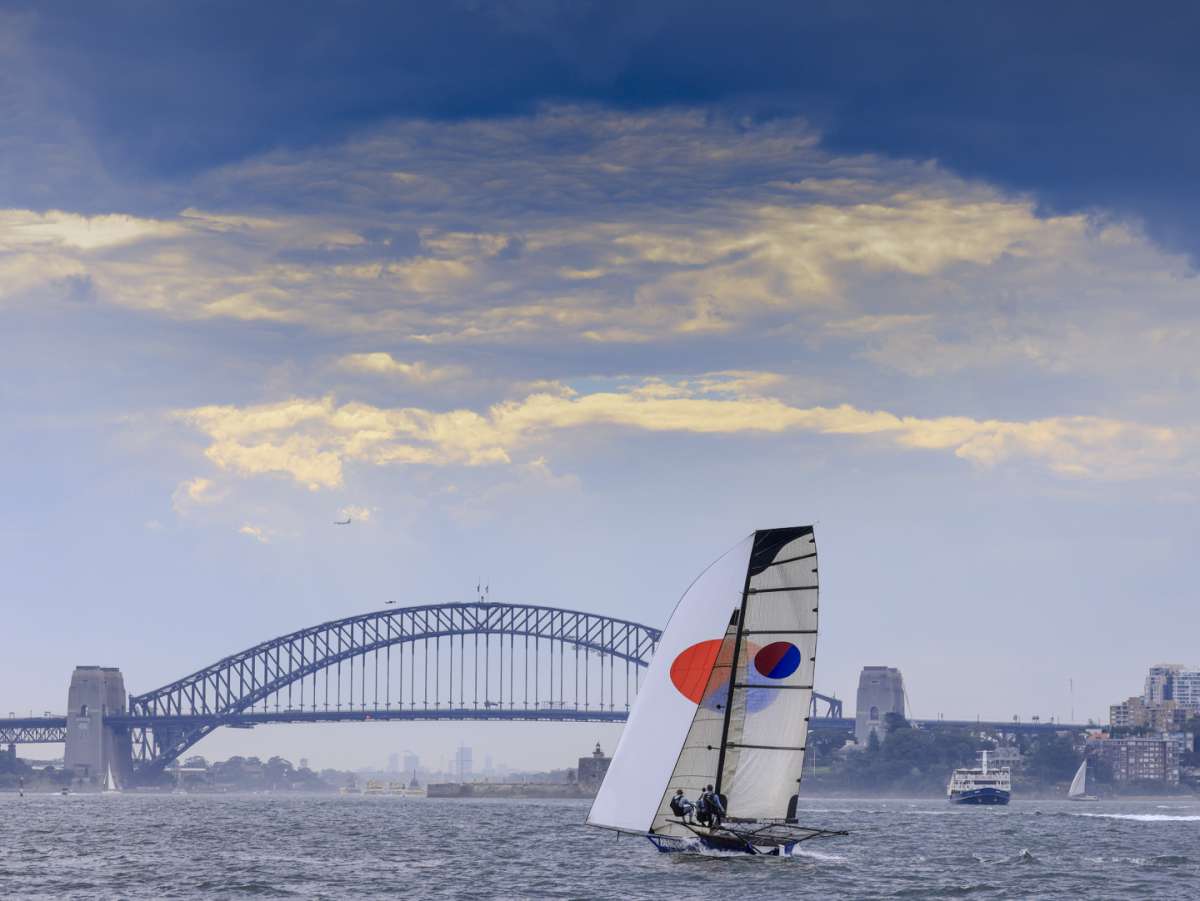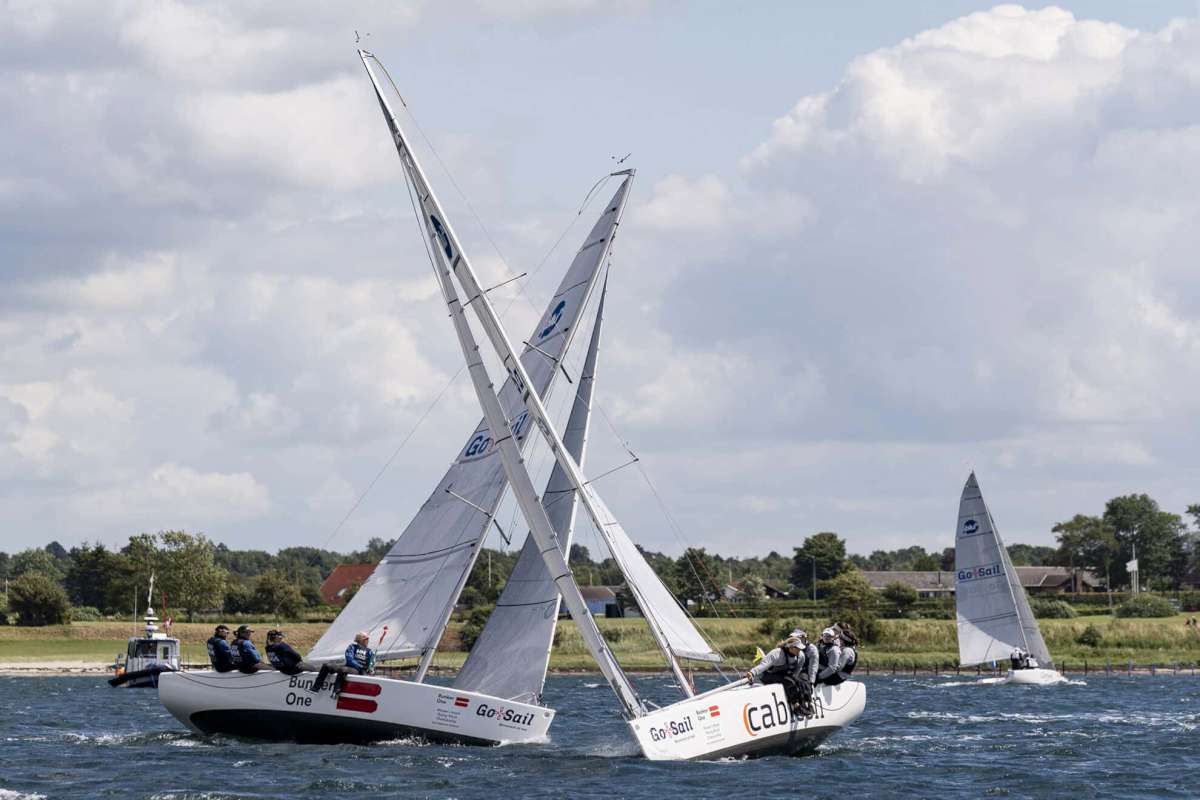Australian Yachting editor Barry Henson recently took the Stornaway Dayboat for a test sail and here's what he found.
Before I begin this boat test, I have a confession to make – I'm a boat voyeur. That's right. I'm one of those people you see at marinas, strolling up and down the wharves, admiring the boats. Much to my wife's chagrin, I can spend hours looking at boats. When we were newly wed she indulged me, walking with me hand in hand along the wharves, pretending to be interested in this boat or that, whilst she secretly prayed that whatever invisible allure boats held for me would die off quickly, presumably to be replaced with a keen interests in gardening, decorating and shopping for the perfect pair of shoes.
Twenty-three years onward and a whole lot wiser, we've learned to accept each other's foibles. She accepts that I am, and always will be, a boat lover and I accept that wild horses couldn't drag her to a marina just to look at boats. So now if we're walking along the waterfront of some foreign city and I spy a group of masts, I'll suggest we split up, go shopping and meet for lunch. Of course this doesn't fool her a bit, but she'll smile and say ‘good idea'. Such is the life of a boat voyeur.
So what does boat voyeurism have to do with the Stornaway Dayboat? Everything! You see the Stornaway Dayboat is a boat voyeur's dream. It has it all: classic styling, shiny bright work, a lovely bowsprit, wooden masts, pretty sails and a graceful shearline – it is a beautiful little boat. It's also an honest little boat; it doesn't pretend to be something it's not. It's not a coastal cruiser and it's definitely not a racer. It's just a classic inshore sailing skiff that will turn heads as it leisurely ports you back in time to a place where the pace of life was slower and where pleasures were something to be savoured.
I took the Stornaway Dayboat for a test sail on Runaway Bay in a light 7 to 10 knot northerly and here's what I found.
First impressions
You might think with the above introduction that there would be no surprises with regard to my first impressions of this boat, but you'd be wrong. My first surprise was that the Stornaway was on a trailer. At 6.4 metres LOA or 21 feet in the old measure, with a 2 metre beam, the Stornaway fits nicely on a trailer opening up a wide range of holiday options. The other nice surprise was that it only took 25 minutes to rig the boat, start to finish. Derek Ellard, the Stornaway's designer and builder assures me that it normally only takes about 15 minutes, but with me asking so many questions and stuffing up a lashing or two, it took longer than usual – facts I can't dispute. With the boat rigged we launched and proceeded to motor out into Runaway Bay, powered by a 2 horsepower Torqeedo electric motor that pushed us briskly along at 5 knots – until it died.
In the last issue of Australian Yachting I invoked ‘Murphy's Law'. In this issue I'm invoking ‘Sod's Law', which says simply, “Murphy was an optimist”. “Of course the bloody engine would die when the bloody boat reviewer's on board!” Derek cried. “It's never done it before. I promise.” Ok, you have to feel a little sympathy for the guy. In a subsequent discussion with the manufacturer, Derek discovered a design issue related to the use of maximum thrust that Torqeedo have promised to address.
About the rig
One of the interesting things about boats, and this is part of boat voyeurism that my wife never appreciated, is that all boats are different. Boat designers pour their hearts and souls into their designs trying to create something that is functional,
performs and is, well, beautiful.
With so many boats these days sporting
Bermuda rigs it's refreshing to
see something different. The Stornaway's rig is a standing lugsail yawl; a bit of a mouthful, I know. It gets its heritage from English and Cornish workboats, but it's been updated to take advantage of modern fittings and materials.
This is a lugsail yawl. Now if you're like me, this is where you're muttering “Why is he calling it a lug? I thought that was a gaff”. The short answer is ‘it's a lug' and in the interest of reducing hate mail I'll explain why. The mast end of the lug actually sticks out past the mast, whereas a gaff stops just short of the mast as a boom would. A fine point, I know, but this is the type of stuff wooden boat aficionados fight wars over.
It's also worth noting that there are two types of lugsails: standing lugsails and dipping lugsails. With a standing lugsail, the lug remains on one side of the mast regardless of which tack you are on. When you tack with a dipping lugsail you lower the lug and re-raise it on whatever is the leeward side of the mast. The
difference, according to Derek, is that that a dipping lugsail is about a third of a knot more efficient. When I asked him why he opted for the standing lugsail, he smiled and looked at me the way you might look at a child who's asked a ridiculously obvious question,
“I mean life's too short, isn't it?” he exclaimed. I have to agree.
A nice feature of the Stornaway's lugsail rig is the brailing line. The brailing line runs up the mast (about half-way) then out to a point about four-fifths through the depth of the lugsail. If you throw off the mainsheet and pull on the brailing line you bunch up the lugsail, effectively dousing the sail. This can be done from the safety of the cockpit with a simple tug on the end of the brailing line.
Lastly, we come to the mizzen sail. With the mizzen abaft of the rudder post this is a yawl. The sail is relatively small, but useful as you will see later in this review. Both the mizzen and main sheets are within easy reach of the helmsman.
The benefits of the Stornaway's rig are three-fold: firstly, its performance off the wind is excellent. This rig has been in use for thousands of years for good reason. Put the wind anywhere aft of 80 degrees and these sails perform remarkably well; secondly, by breaking the sail area into three sails you get a large overall sail area (17.13 square metres) with the ease of handling small sails; and lastly, this rig offers you some interesting boat handling options. For example, if I roll up the headsail, braile the lugsail and sheet in the mizzen, this boat will immediately heave to and stop. That's a nice ability to have if you want to take throw in a fishing line or open a nice bottle of wine.
On deck
The Stronaway is designed for simplicity. Everything is small enough that it can be done by hand. The lug and genoa halyards, the brailing line and the roller furling lines are led into the cockpit through cam cleats where they're tied off to pins. The genoa sheets run through fairleads into cam cleats along the side deck and the main and mizzen sheets run aft into the cockpit. It's all very simple and straightforward.
The pin arrangement forward is a nice touch; a classic feature well-executed that you can't help but admire.
In the cockpit
The cockpit has broad curved seats on either side with a large aft seat incorporating a small lazzarette. There are open compartments across the backs of the port and starboard seats and beautifully carved racks under each seat for the whisker poles. The Stornaway also comes in a ‘weekender' version that includes a covered cabin with a v-berth.
Under the waterline
Derek has given the Stornaway with an easily driven hull shape with a long keel and lead ballast for stability. The ballast to displacement ratio is quite high at 43 percent, which gives the Stornaway a lot of stability. Drawing only 450 mm this is a great boat for shoal waters.
The rudder fits neatly at the end of the long keel, which gives the hull excellent tracking abilities.
The keel/rudder configuration isn't what I'd pick if I was looking for a race boat that needs to turn on a ten cent piece, but if you're looking for an underwater configuration that delivers a forgiving, stable, shoal-draft boat that tracks well, then this is a good choice.
So how does it sail?
Surprisingly well is my honest answer. I have to admit that going into this test I didn't have terribly high expectations for this rig's sailing abilities, but I was pleasantly proved wrong. We sailed in fairly light airs of 7 to 10 knots and off-the-wind we consistently achieved 5 to 6 knots of boat speed. On a broad reach we were able to overhaul and pull away from a Flying 15, which I thought was quite impressive.
I realised as the day went on that I had entered this test with the preconception that ‘old fashioned' rigs are inefficient. But what I learned was that a well-executed lugger or gaffer is the second most efficient rig there is and with its larger overall sail area and its ability to present a flatter surface to the wind, it can out-perform a Bermuda rig off-the-wind and that was a real eye opener.
On the other side of the ledger, the lugsail isn't very efficient to windward. You can't point as high as you could with a Bermuda rig. That said, the Stornaway doesn't pretend to be a race boat and if you're willing to bear away slightly and crack the sheets a bit, you can still make decent boat speed to windward.
The only other performance issue was evident in tacking. A long keel with the keel-hung rudder is great for downwind tracking ability, but it also means that you need to allow more time and space for the boat to turn. It helps to backwind the genoa as you tack.
As any boat designer will tell you, boat design is the art of compromise. You could improve the Stornaway's upwind abilities by changing the rig, keel and rudder, but each of those changes would bring performance compromises of a different sort and, frankly, you'd lose the characteristics and styling that makes this boat so wonderful and distinctive. At the end of the day you choose what you want the boat to do and you design to that brief.
In conclusion
If you're after a small day sailor that's a real head-turner, something a bit different that will take you and your partner around the bay in style, then the Stornaway Dayboat is well worth looking at. It's trailerable, shoal-draft, forgiving, easy to handle and it sails beautifully off the wind. I can imagine many a well-spent afternoon exploring bays and inlets on a boat like this.
As any boat voyeur will tell you, boats are more than the sum of
their parts. A beautiful boat is something to be appreciated and admired
and the Shornaway Dayboat is certainly that.
The Shornaway Dayboat is available in kit form and as a finished product. You can get the basic boat (hull and rig) in kit form for under $13K or Scruffie Marine will build you a basic boat with rig and sails for around $35K. The boat we tested had several custom extras and it cost $45K all up.
Scruffie Marine have sold over 275 kits worldwide for Derek's designs.
For more information on the Stornaway Dayboat or for any of the Scruffie designs, call Derek Ellard at Scruffie Marine on ph 07 5545 1015 or visit www.scruffie.com.
Scruffie Marine paid for my airfare and parking.




